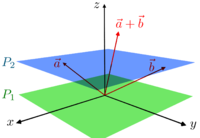Affine space

Imagine you and your friend are playing with toy cars on a sheet of paper. You both decide to draw roads and buildings on the paper so that it looks like a city. You can move your toy car anywhere you want on the paper, but you can't leave the paper. Your friend can do the same thing with their toy car.
This is like an affine space. It's a space where you can move things around, like your toy car, but you can't leave the space. In an affine space, you can move objects in any direction as long as you stay in the same space.
So in our example, you and your friend can move your toy cars up, down, left, right, or diagonally on the paper, but you can't leave the paper. This is just like an affine space where you can move objects in any direction, but you can't leave the space.
Affine spaces are used in math and geometry to talk about objects that can be moved around without changing their shape or size. It's useful because it helps us understand how things in the world can move relative to each other without changing their fundamental properties.
This is like an affine space. It's a space where you can move things around, like your toy car, but you can't leave the space. In an affine space, you can move objects in any direction as long as you stay in the same space.
So in our example, you and your friend can move your toy cars up, down, left, right, or diagonally on the paper, but you can't leave the paper. This is just like an affine space where you can move objects in any direction, but you can't leave the space.
Affine spaces are used in math and geometry to talk about objects that can be moved around without changing their shape or size. It's useful because it helps us understand how things in the world can move relative to each other without changing their fundamental properties.
Related topics others have asked about:
